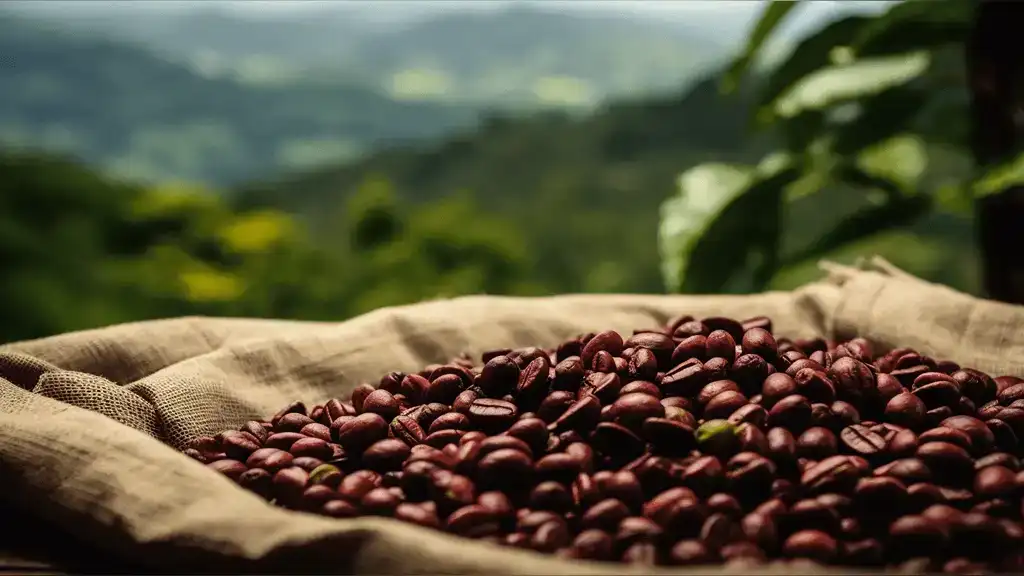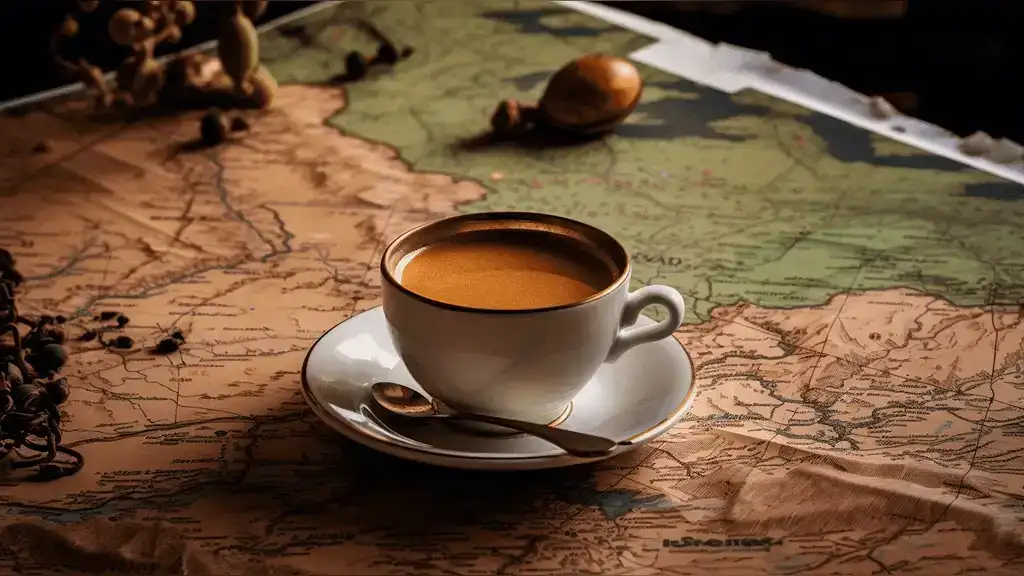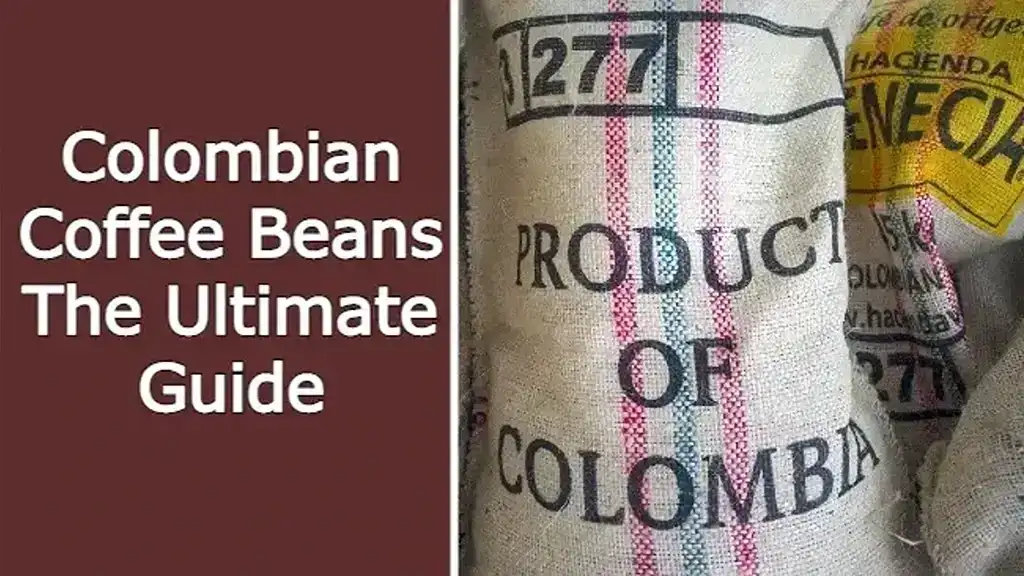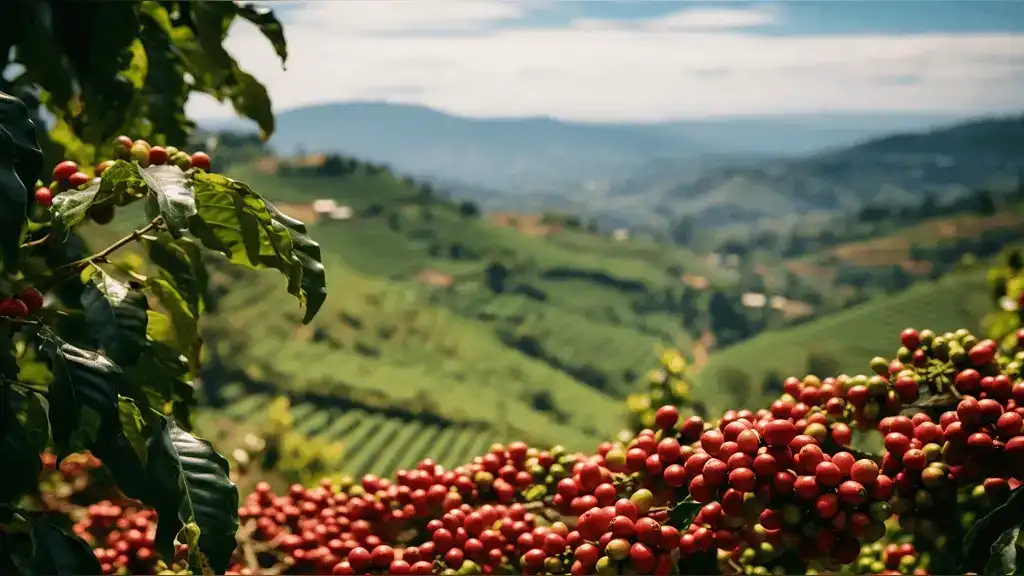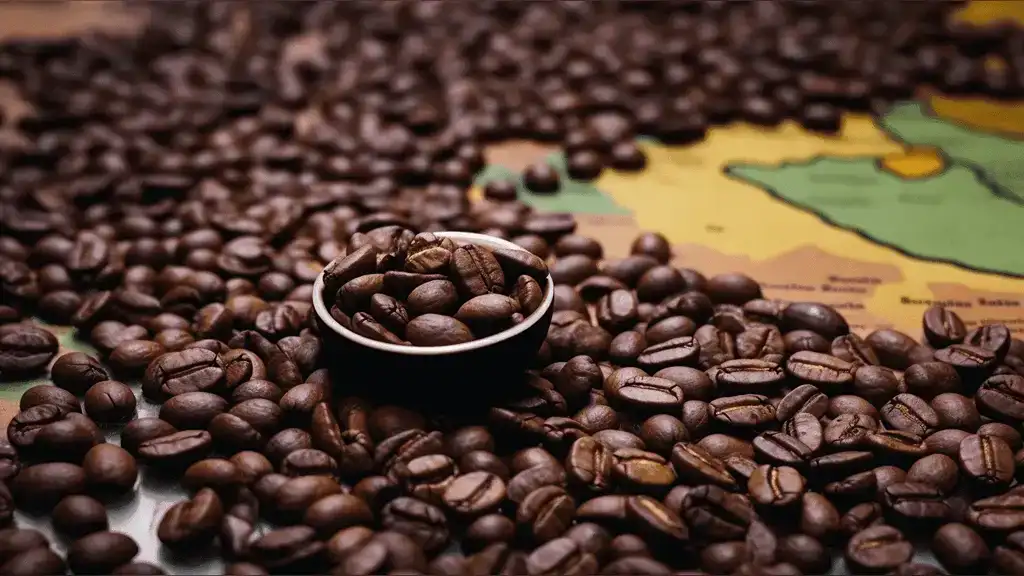Guatemala has known for its rich culture as well as its coffee beans. They produce both Arabica and Robusta coffee beans. The majority of Guatemala’s coffee plantations are located in the departments of Huehuetenango, Guatemala, Antigua Guatemala, and Coban. Guatemala is known for its high-quality coffee beans and its coffees have won many awards.
Guatemala is a country located in Central America, bordered by Mexico to the north and west, Belize and the Caribbean Sea to the northeast, Honduras to the east, El Salvador to the southeast, and the Pacific Ocean to the south. The terrain of Guatemala is mostly mountainous with narrow coastal plains and rolling hills in the central and southern regions.
Guatemala is home to several volcanoes, including some of the most active ones in Central America. The country has a tropical climate with Guatemala City having an average temperature of 21 degrees Celsius (70 degrees Fahrenheit).
Guatemala Coffee History
Guatemala has a rich history dating back to the Maya civilization. The Maya were one of the most advanced civilizations of their time and their legacy can still be seen in Guatemala today. Guatemala was also home to the ancient city of Tikal, which was one of the largest Maya cities.
Guatemala gained independence from Spain in 1821 and became a part of the Mexican Empire. However, Guatemala declared itself an independent republic in 1839. Guatemala has been through a lot of political turmoil in its history, with military dictatorships and coups being common. Guatemala also experienced a civil war from 1960 to 1996, which was one of the bloodiest in Latin American history.
Guatemala is the largest producer of coffee in Central America and is ranked 20th in the world in terms of production. Guatemala produces both Arabica and Robusta coffee beans. The country has over 200,000 hectares of land dedicated to coffee cultivation, with the majority of plantations being located in the departments of Huehuetenango, Guatemala, Antigua Guatemala, and Coban.
Guatemala is known for its high-quality coffee beans and its coffees have won many awards. Guatemala’s coffee industry employs over 200,000 people and contributes around 1% to the country’s GDP.
If you’re curious about other Central American coffee origins, check out our Expert Guide to Honduran Coffee Beans.
What makes Guatemalan coffee beans so special?
Guatemala is a country with a rich history of coffee cultivation. The country’s climate and terrain are ideal for growing coffee, and Guatemalan coffee beans are some of the best in the world. Guatemala is also one of the largest coffee-producing countries in the world.
For a deeper dive into Central American coffee flavors, don’t miss our comprehensive Panama Coffee Beans Guide: Exploring Varieties for a flavorful experience.
Guatemalan climate
is perfect. The country has a tropical climate, with average temperatures ranging from 18 to 22 degrees Celsius. The tropical climate is ideal for coffee cultivation, as it is warm and humid, with plenty of rainfall.
diverse landscape
Guatemala also has a diverse landscape, with mountains, volcanoes, and lush valleys. This diversity provides a variety of microclimates, which is ideal for coffee cultivation.
The taste
Guatemala’s coffee beans are grown in a variety of microclimates, which gives them a unique flavor. Guatemalan coffee is often described as being rich, flavorful, and well-balanced. The coffee is also known for its bright acidity.
The prices
Prices are considered low. You can find a pound of Guatemala coffee beans for around $5 USD. This is an excellent price for such high-quality coffee beans. The low prices are due to Guatemala’s large coffee production. Guatemala is one of the world’s leading producers of coffee, and this high production volume keeps prices low.
The prices of Guatemala’s coffee beans vary depending on the type of bean and the specific region where it was grown. For example, Arabica beans from Guatemala’s Antigua region are typically more expensive than beans from other regions.
popular varieties of Guatemala coffee beans include:
- Antigua Coffee: Antigua coffee is grown in the volcanic region around Lake Atitlan. Coffee beans are known for their rich flavor and aroma.
- Coban Coffee: Coban coffee is grown in the mountainous region of Guatemala. The coffee beans are known for their medium body and acidity.
- Huehuetenango Coffee: Huehuetenango coffee is grown in the highlands of Guatemala. The coffee beans are known for their full body and sweetness.
The best coffee beans in the world come from Guatemala
Guatemala is home to some of the best coffee beans in the world. The country’s coffee bean exports have been booming in recent years, and Guatemalan coffee beans are now sought after by coffee lovers around the globe.
Some of the best coffee beans in Guatemala come from the Antigua region. The coffee beans from this region are known for their rich flavor and delicate aroma. Other great regions for coffee beans in Guatemala include Coban, Quetzaltenango, and Huehuetenango.
Guatemala is home to some of the most popular coffee brands in the world, such as Café Guatemala and Guatemala Coffee Roasters. These brands are known for their high-quality coffee beans and their unique flavor profiles. If you’re looking for a truly unique cup of coffee, then Guatemalan coffee is definitely worth a try.
Grown Regions of Coffee in Guatemala
Guatemala is a country rich in culture and history, and its coffee beans are no different. Guatemala has many different regions that are perfect for growing coffee. Each region has its own unique climate and terrain, which helps to produce a coffee bean that is distinctive in flavor.
The most popular coffee-growing regions in Guatemala are the highlands, which produce a coffee bean that is known for its bright acidity and complex flavor. The highlands are also home to some of the most popular coffee-growing regions in Guatemala, such as Antigua, Huehuetenango and Coban Region.
Other coffee-growing regions in Guatemala include the lowlands, which produce a coffee bean that is known for its milder flavor, and the coastal region, which produces a coffee bean that is known for its sweetness.
Experience the diverse flavors of Guatemala’s coffee regions. Uncover the vibrant notes of the Antigua Region, the delightful fruitiness of Huehuetenango, and the balanced profile of Coban beans in our Nicaragua Coffee Beans Guide.
Antigua Region
Guatemala’s Antigua region is one of the most popular coffee-growing regions in Guatemala. The region is known for its rich soil, which helps to produce a coffee bean that is full of flavor.The Antigua region is known for its bright acidity and complex flavor.
Guatemala Coffee Beans grown in this region are some of the most sought-after beans in the world.
Huehuetenango Region
Guatemala is one of the most renowned coffee-growing regions in the world. The country’s diverse landscape and climate make it ideal for producing high-quality coffee beans. The Huehuetenango region, in particular, is known for its rich, flavorful coffee.
Guatemala Coffee Beans are some of the most sought-after in the world. They have a unique flavor that is both fruity and chocolatey. Coffee grown in this region is typically darkly roasted, which brings out the beans’ natural sweetness.
Coban Region
Guatemala is world-renowned for its beautiful landscape and ideal coffee-growing conditions. The country’s diverse topography and climate make it possible to grow a wide variety of coffee beans. The Coban region, in particular, is home to some of the best coffee in Guatemala.
The Coban region is located in the southeastern part of Guatemala. The region’s climate is perfect for coffee cultivation, with warm temperatures and ample rainfall. The region’s rich soils are also ideal for coffee production.
Coffee farmers in the Coban region have access to a wide variety of Guatemalan coffee beans. These include the popular Bourbon, Caturra, and Typica varieties. The region’s coffee farmers have also developed their own unique varieties, such as the Pacas and Maragogype.
The Coban region’s coffee farmers have a long tradition of producing high-quality coffee. They have developed a deep knowledge of coffee cultivation and processing. This allows them to produce some of the best coffee in Guatemala.
Guatemala Coffee Beans Process
Guatemala is a country that is known for its coffee beans. The coffee beans are grown in the mountains and they are processed in a very unique way. Guatemala has a long tradition of processing coffee beans, and they have perfected their methods over the years.
1. hand-pick
The first step in Guatemala’s coffee bean processing is to hand-pick the ripe coffee cherries. This is done by farmers who carefully select only the ripest and best cherries from the bunch. Once the cherries are picked, they are then sorted by quality.
2. Quality Sorting
The best cherries are set aside to be used for specialty coffees, while the lower quality ones are sold to commercial roasters.
3. washed and dried
After the sorting process, the coffee cherries are then hulled and the coffee beans are separated from the fruit. The coffee beans are then washed and dried in the sun. Once they are dried, they are sorted again by quality. The best beans are set aside to be roasted, while the lower quality ones are sold to commercial roasters.
4. Roasting Process
Guatemala’s coffee beans are roasted in a very special way. They are placed in a roaster and slowly rotated over an open fire. This process allows the coffee beans to develop their unique flavor. After they are roasted, the Guatemala coffee beans are then ground and brewed.
Types of Guatemala Coffee Beans
Guatemala is world-renowned for its coffee beans, which are used in some of the best coffees around the globe. There are three main types of Guatemala coffee beans: Arabica, Robusta, and Bourbon.
Guatemala Arabica coffee beans
Guatemala Arabica coffee beans are grown in the country’s mountainous regions at altitudes of 4,000 to 6,000 feet. The climate is cool and the soil is rich, resulting in a slow-growing bean with high acidity.
Guatemala Arabica beans are used in some of the world’s most popular coffees, such as Starbucks Guatemala Antigua Coffee and Dunkin’ Donuts Guatemala Puro Caffè.
Guatemala Robusta coffee beans
Guatemala Robusta coffee beans are grown in the country’s lowland regions at altitudes of 1,000 to 2,000 feet. The climate is hot and the soil is not as rich, resulting in a fast-growing bean with lower acidity.
Guatemala Robusta beans are used in some of the world’s most popular coffees, such as Nescafé Original and Maxwell House International Café.
Guatemala Bourbon coffee beans
Guatemala Bourbon coffee beans are grown in the country’s mountainous regions at altitudes of 4,000 to 6,000 feet. The climate is cool and the soil is rich, resulting in a slow-growing bean with high acidity.
Guatemala Bourbon beans are used in some of the world’s most popular coffees, such as Starbucks Guatemala Antigua Coffee and Dunkin’ Donuts Guatemala Puro Caffè. Guatemala Bourbon coffee beans are also used in some of the world’s most popular teas, such as Lipton Tea.
Guatemala coffee beans vs. Brazilian coffee beans?
- Guatemala has a long coffee tradition than Brazil- Guatemala’s coffee culture dates back to the early 1800s, while Brazil’s only began in the mid-1800s. This means that Guatemala has had more time to perfect its coffee-growing techniques.
- Guatemala is home to a wider variety of coffee beans than Brazil- There are over 100 different types of coffee beans grown in Guatemala, while Brazil only has around 20. This gives Guatemala coffees a more complex flavor profile.
- Guatemalan coffee beans are typically shade-grown, which leads to a higher quality bean- Shade-grown coffee beans are of higher quality than sun-grown beans. This is because they grow slower and develop a harder shell, leading to a more flavorful bean.
Of course, the comparison will not be completely fair due to the geographical proximity between Brazil and Guatemala. It is best to read our full review of coffee beans from Brazil and learn about their wonderful advantages that we deliberately did not mention in this comparison.
Guatemala coffee vs. El Salvador Coffee?
Guatemala has some of the richest, most flavorful coffee beans in the world. But El Salvador coffee beans are no slouch either. So, which country produces the better coffee?
Guatemala’s coffee beans are grown in the country’s volcanic soil, which gives them a unique flavor. The country’s climate is also ideal for coffee production, with warm days and cool nights. All of these factors combine to produce Guatemala’s signature coffee flavor: rich, full-bodied, and slightly sweet.
El Salvador’s coffee beans, on the other hand, are grown in the country’s highlands. The climate here is cooler than Guatemala’s, which gives the coffee a brighter, more acidic flavor. El Salvador’s coffee is also known for its sweetness, although it is not as sweet as Guatemala’s.
So, which coffee is better? That’s a matter of personal preference. If you like your coffee rich and full-bodied, then Guatemala’s coffee is the way to go. If you prefer a brighter, more acidic flavor, then El Salvador’s coffee is the better choice.
Frequently Asked Questions
Guatemala vs Jamaican Coffee Beans
Guatemala and Jamaica are both renowned for their coffee production, with each country producing some of the finest coffee beans in the world. While Guatemala’s coffee beans are known for their high quality and rich flavor, Jamaica’s coffee beans are celebrated for their unique taste and aroma.
The coffee beans from Jamaica’s Blue Mountains are considered a treasure by coffee connoisseurs, and are highly sought after by coffee roasters around the world.
If haven’t yet had the chance to try Jamaica’s prized coffee, you’re missing out on one of the world’s most flavorful and distinctive coffees. To learn more about Jamaica’s coffee beans and immerse yourself into the world of coffee, explore our topic on Jamaica Coffee Beans – The World Coffee Treasure.
Guatemala vs Peruvian Coffee beans
Guatemala coffee beans are known for their bold flavor, while Peruvian coffee beans have a smoother taste. When you brew a cup of coffee using Guatemalan beans, you can expect a robust and rich flavor that lingers on your palate. The boldness of these beans creates a strong and intense coffee experience that coffee lovers appreciate.
On the other hand, Peruvian coffee beans offer a more subtle and mellow taste. When you sip a cup made from Peruvian beans, you’ll notice a smoother and more balanced flavor profile. These beans are often described as having a gentle sweetness and a delicate acidity. If you prefer a coffee with less intensity, Peruvian beans are a great choice.






